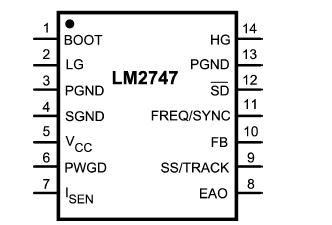LM2747: Features: · ±1% feedback voltage accuracy over temperature· Switching frequency from 50 kHz to 1 MHz· Switching frequency synchronize range 250 kHz to 1 MHz· Startup with a pre-biased output load· P...
floor Price/Ceiling Price
- Part Number:
- LM2747
- Supply Ability:
- 5000
Price Break
- Qty
- 1~5000
- Unit Price
- Negotiable
- Processing time
- 15 Days
SeekIC Buyer Protection PLUS - newly updated for 2013!
- Escrow Protection.
- Guaranteed refunds.
- Secure payments.
- Learn more >>
Month Sales
268 Transactions
Payment Methods
All payment methods are secure and covered by SeekIC Buyer Protection PLUS.

 LM2747 Data Sheet
LM2747 Data Sheet







